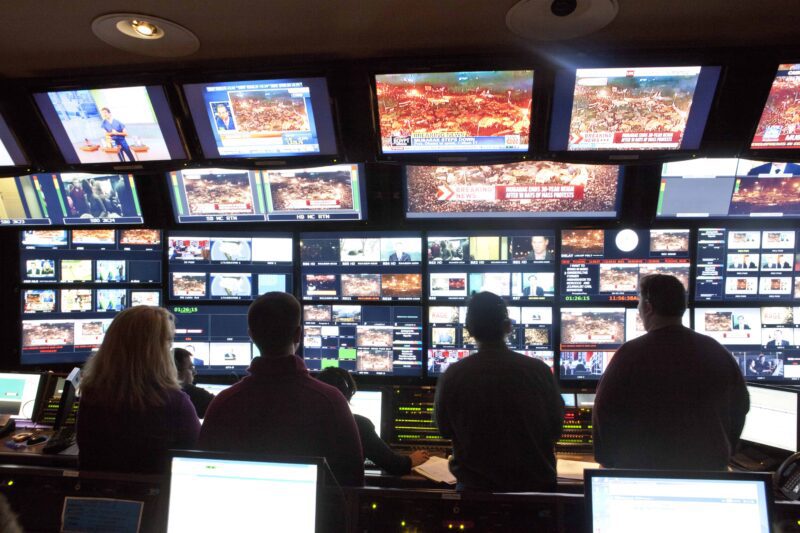This commentary was originally published on the World Economic Forum website.
- Maintaining diversity in the newsroom and providing inclusive content is imperative for the longevity of any media platform.
- More diverse and inclusive newsrooms and coverage can provide better representation of societies, build audience trust and even make news organizations more profitable.
- News outlets that do not actively make diversity in the newsroom and inclusion a priority could face a decline in both readership and profits.
The Black Lives Matter protests and the #MeToo movement have shed light on the lack of racial and gender diversity in the workplace. The state of diversity in the newsroom is no exception: according to a 2016 Pew Research Center analysis, just 23% of newsroom employees were people of colour, while 61% of newsroom employees were men.
As Chief Executive of Internews, I’ve visited dozens of newsrooms in every inhabited continent. Across the board, I’ve noticed a commonality: having a diverse workforce bodes well for producing accurate and well-reported news content.
The world is becoming more diverse and it’s a newsroom’s responsibility to reflect this – failure to do so can result in news outlets being left behind.
The rise of user-generated news platforms, which often outperform traditional outlets in attracting new audiences, underscores the risk of failing to cater to diverse audiences. Audience growth trends at user-generated news platforms like Blavity and Outlier suggest the new generation of readers want content that reflects their experiences and perspectives.
Maintaining a diverse workforce and providing inclusive content is imperative for the longevity of any media platform. This is why it comes as a shock to me that inclusion is still lacking within the industry. Thankfully, the Tackling Diversity and Inclusion in the Newsroom report from the World Economic Forum takes on this issue from a business and ethical standpoint.
Including different perspectives
A diverse newsroom is essential for media institutions that pride themselves on providing well-researched, complex stories that explore different perspectives and voices. The news content the media provides should be an accurate reflection of the diverse society it serves As such, to reflect this society, we need to make sure that journalists from different cultures, religions and genders are represented.
It’s not just about providing different perspectives and viewpoints. Media institutions need to ensure that their newsroom culture reflects the diverse news content they’re producing, otherwise, audiences may question their authenticity.
Eliminating culturally insensitive mistakes
No matter their background, all journalists should be more than capable of objectively reporting stories that explore perspectives different from their own. However, a lack of knowledge or unconscious biases may lead some journalists to produce culturally insensitive reporting.
To be clear, I’m not suggesting that only journalists who have a personal connection to a news story should exclusively write about that topic. However, having a diverse team of journalists who can assist with reviewing news content can lessen the chance of mistakes that could harm the outlet’s brand.
Last year, the Guardian had to issue an apology for mistakenly using a picture of UK rapper Kano when referring to Wiley. The latter at the time was under scrutiny for anti-Semitic comments. Even though the newspaper claimed this was an “honest mistake”, it sparked conversations online regarding the lack of diversity in the newsroom. Many journalists from marginalized communities observed that a more diverse newsroom would spot the mistake before it was published.
Helping to build trust
An IPSOS study of 27 countries found that over a five-year period from 2014-2019, public trust in newspapers and magazines dropped by an average of 16%. In the US and Great Britain – two countries traditionally seen as having model independent media systems – public trust in print media dropped by 26% and 27% respectively.
Importantly, there’s a big difference between “the media” and local media: local news outlets are more trusted because they are more likely to know and reflect the communities they serve.
During the pandemic, trust in the media has never been more critical. For the last few years, media institutions have been responsible for keeping billions of people updated on COVID transmission rates and vaccine efforts. The success of Epicenter-NYC is an example of just how much of an impact local media can have when it commands community trust. Epicenter-NYC is a media company that was founded by and for members of the Jackson Heights neighbourhood in New York. When vaccination rates were lagging in the community, Epicenter made vaccine sign-up information readily available on its site. As a result, the organization encouraged more than 4,600 people to get vaccinated.
Creating a diverse newsroom can help establish trust in various communities and other under-represented groups. With the pandemic still raging, both local and national news outlets should be looking for ways to help sustain and build trust with their audiences.
Making media institutions more profitable
Studies suggest that the most diverse companies are more likely to outperform non-diverse companies in terms of profitability. A 2019 analysis by McKinsey suggests that companies in the top quartile of gender diversity on executive teams were 25% more likely to experience above-average profitability than peer companies. News outlets that do not actively make diversity in the newsroom and inclusion a priority could face a decline in both readership and profits.
The research published by the World Economic Forum makes one thing very clear: diverse newsrooms are essential for the betterment of any media institution that prides itself on providing news content that reflects an accurate representation of the world we live in today.
